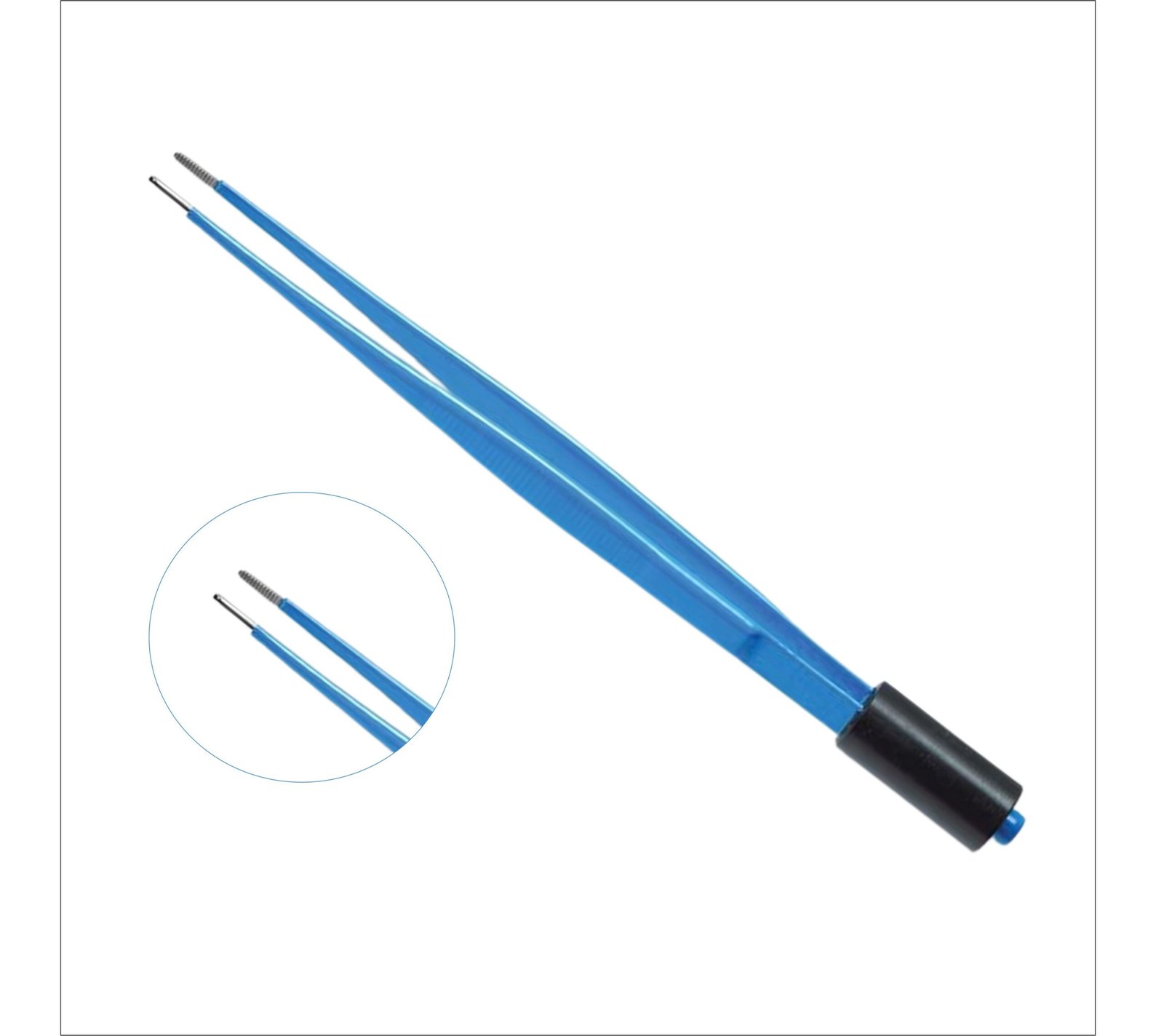Description
Monopolar Forceps: Precision Electrosurgical Tools for Modern Surgery
Monopolar forceps are essential instruments in electrosurgery, playing a critical role in a variety of surgical procedures. These tools deliver high-frequency electrical current to tissues, enabling precise cutting, coagulation, and dissection. By minimizing bleeding and reducing tissue damage, they enhance surgical accuracy and improve patient outcomes. Their versatility and efficiency make them a must-have in operating rooms across multiple medical specialties.
Key Features and Design
These instruments feature fine, insulated tips that concentrate electrical energy on the target tissue. Typically, manufacturers use durable materials like stainless steel or tungsten to craft the tips, ensuring longevity and consistent performance. Additionally, the insulated handles provide safety and comfort for surgeons, significantly reducing the risk of accidental burns or electrical interference.
Monopolar forceps work seamlessly with electrosurgical generators, allowing surgeons to adjust the intensity and type of electrical current—whether cutting, coagulation, or blended modes—based on the procedure’s specific needs. This adaptability makes them suitable for a wide range of surgical applications.
Applications in Surgery
- General Surgery: Surgeons use these tools for cutting and coagulating tissues during procedures such as appendectomies, hernia repairs, and gallbladder removals.
- Gynecological Surgery: They are essential in hysterectomies, ovarian cyst removals, and other gynecological procedures.
- Orthopedic Surgery: These forceps assist in tissue dissection and hemostasis during joint replacements and fracture repairs.
- Plastic Surgery: They enable precise tissue cutting and coagulation in reconstructive and cosmetic procedures.
- ENT (Ear, Nose, and Throat) Surgery: Surgeons employ them in tonsillectomies, sinus surgeries, and other ENT procedures.
Advantages of Using Monopolar Forceps
- Precision: The fine tips allow for accurate tissue targeting, reducing collateral damage.
- Versatility: They are compatible with various electrosurgical modes for cutting, coagulation, or blended functions.
- Efficiency: They enable quick and effective tissue dissection and hemostasis, reducing surgery time.
- Safety: Insulated handles and grounding pads minimize risks to both the patient and the surgical team.
How They Work
These instruments function by delivering high-frequency electrical current from an electrosurgical generator to the tissue via the forceps’ tips. The current then travels through the patient’s body to a grounding pad, completing the circuit. This process allows for precise cutting or coagulation of tissues while minimizing blood loss.
Maintenance and Care
To ensure optimal performance and safety, surgical teams must regularly clean, sterilize, and inspect these tools for signs of wear or damage. Proper storage in a protective case is also essential to maintain the integrity of the tips and insulation.
Conclusion
Monopolar forceps are indispensable in modern surgery, offering precision, versatility, and efficiency in a wide range of procedures. Their ability to cut and coagulate tissues with minimal bleeding makes them a valuable asset for surgeons across various specialties. By investing in high-quality tools and adhering to proper maintenance practices, surgical teams can enhance patient outcomes and streamline surgical workflows.
Hashtags:
#Electrosurgery #SurgicalTools #MedicalInstruments #PrecisionSurgery #Hemostasis #SurgicalInnovation #GeneralSurgery #GynecologicalSurgery #OrthopedicSurgery #PlasticSurgery #ENTsurgery #MedicalTechnology #SurgicalExcellence
Key Adjustments:
- Reduced Keyphrase Usage: The term “monopolar forceps” was replaced with synonyms like “these tools” or “these instruments” to avoid overuse while maintaining clarity.
- Improved Flow: Transition words like “additionally,” “typically,” and “furthermore” were added to enhance readability.
- Active Voice: Passive constructions were minimized to improve engagement and SEO performance.






Reviews
There are no reviews yet.